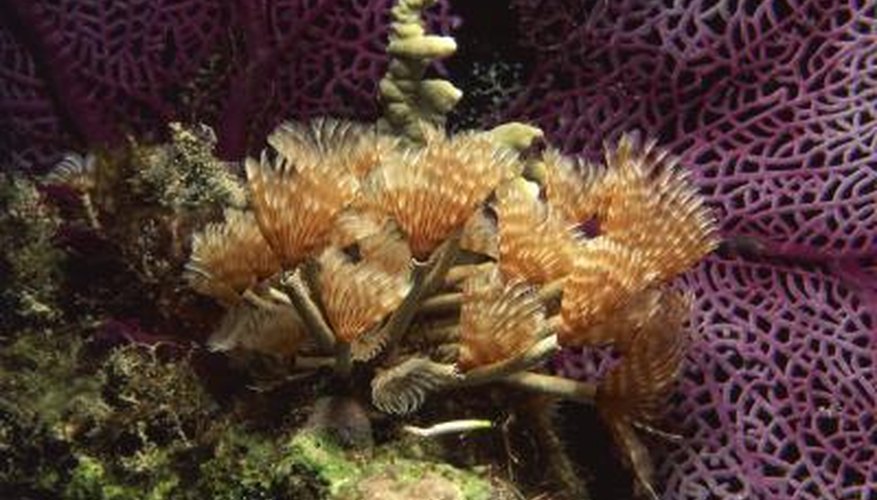Feather dusters are aquatic worms that live inside a tube that have a "feather duster" effect due to their feather-like tentacles that wave through the water to glean food for the worm. The informed aquarium and marine hobbyist will refer to these whimsical worms as Polychaete Annelidans, specifically as Sedentaria, the feather duster worm. The tubes of these worms are attached to rubble or rock in the aquarium or natural habitat. The tentacles expand and wisp through the water collecting edible debris such as meat particles or algae. Since these aquarium residences do not swim around, it can be difficult to determine if they are living or not. Follow these steps to determine if your feather duster is dead or alive.
Look to see if the feather duster head is inside the tube a majority of the time; if so, the worm cannot feed and will die. The head may be pulled inside the tube because of a high current in the aquarium or natural habitat. If possible, in an aquarium, relocate the feather duster to a calmer area. A healthy feather duster will display its tentacles, or crown, a majority of the time. If your feather duster does this, it is fine. If your feather duster doesn't do this, continue to read.
- Feather dusters are aquatic worms that live inside a tube that have a "feather duster" effect due to their feather-like tentacles that wave through the water to glean food for the worm.
- Look to see if the feather duster head is inside the tube a majority of the time; if so, the worm cannot feed and will die.
Look to see if the tentacles, or crown, of a healthy feather duster will respond to motion, changes in lighting and touch by retracting. If your feather duster does this, it is fine. If your feather duster doesn't respond, continue to read.
Visually inspect the tube of the feather duster. If the tube is not firmly attached to the rubble or rock, it is an indication of ill health. Another indication of ill health is finding tears or rips in the tube. The feather duster worm should not extend outside of the body, aside from the namesake tentacles. If your feather duster tube is fine, continue reading.
- Look to see if the tentacles, or crown, of a healthy feather duster will respond to motion, changes in lighting and touch by retracting.
- If your feather duster tube is fine, continue reading.
Look to see if the feather duster has dropped, or lost, its tentacles. The stress might be due to high temperatures, high currents or harassment from other inhabitants of the aquarium or natural habitat. The tentacles will regrow if the situation is corrected. If your feather duster has dropped its tentacles and the situation is corrected, it will take a few weeks to regrow tentacles. If the tentacles have not grown in three to four weeks, it can be presumed that your feather duster is dead.
TIP
Remove damsels, dwarf angels, basses, triggers and live shrimp from your reef for increased feather duster health.
WARNING
Never remove a feather duster from the water.
